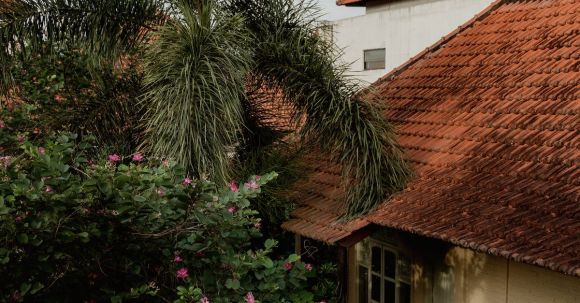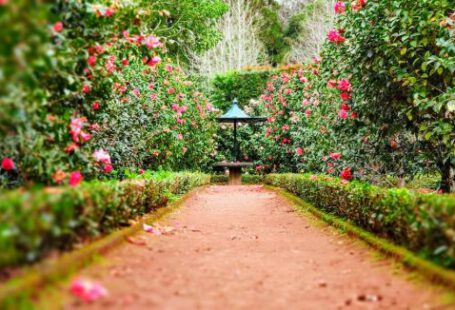When it comes to creating a stunning outdoor space, Mediterranean-style garden design is a popular choice. This style is inspired by the beautiful landscapes and lush gardens found in countries such as Italy, Greece, and Spain. With its emphasis on natural materials, vibrant colors, and fragrant plants, a Mediterranean-style garden can transport you to a tranquil oasis right in your own backyard.
1. The Elements of Mediterranean-style Garden Design
To achieve an authentic Mediterranean look, there are several key elements to consider. First, the use of natural materials such as stone, terracotta, and wood is essential. These materials not only add a rustic charm but also help to create a sense of harmony with the surrounding environment.
In terms of color, Mediterranean gardens are known for their vibrant and warm tones. Shades of yellow, orange, and blue are often used to reflect the sunny and coastal landscapes of the Mediterranean region. Consider incorporating these colors through the use of flowering plants, colorful pots, and decorative tiles.
2. Choosing the Right Plants
One of the most important aspects of Mediterranean-style garden design is selecting the right plants. Mediterranean plants are known for their ability to thrive in hot and dry conditions, making them well-suited for gardens in warmer climates. Some popular choices include lavender, rosemary, olive trees, and citrus trees. These plants not only add beauty but also provide a delightful fragrance that can transport you to the Mediterranean coast.
In addition to these traditional Mediterranean plants, you can also incorporate drought-tolerant succulents and cacti for a more contemporary twist. Their unique shapes and textures can add visual interest to your garden while requiring minimal maintenance.
3. Creating Outdoor Living Spaces
A Mediterranean-style garden is not just about the plants; it’s also about creating outdoor living spaces where you can relax and entertain. Consider adding a shaded pergola or a cozy seating area where you can enjoy a glass of wine or a cup of tea. Use natural materials such as rattan furniture and decorative cushions to enhance the Mediterranean vibe.
To create a sense of privacy and enclosure, consider using trellises covered in climbing vines or tall hedges. This will not only provide shade but also create a sense of intimacy within your outdoor space.
4. Incorporating Water Features
Water features are another important element of Mediterranean-style garden design. From small fountains to large ponds, the sound of flowing water can add a soothing ambiance to your outdoor space. Consider adding a water feature as a focal point or as a background element, depending on the size of your garden.
In addition to their aesthetic appeal, water features also provide practical benefits. They can help to cool the surrounding area, attract birds and other wildlife, and mask unwanted noises from neighboring properties.
5. Maintenance and Care
While creating a Mediterranean-style garden is relatively low-maintenance, there are still some care tips to keep in mind. Regular watering is essential, especially during the hot summer months. However, it’s important to water deeply and infrequently to encourage deep root growth and prevent water wastage.
Pruning and trimming should also be done regularly to keep your plants healthy and to maintain their desired shape. Finally, don’t forget to provide adequate protection during colder months if you live in a climate with freezing temperatures.
In conclusion, Mediterranean-style garden design offers a unique and inviting aesthetic that can transform your outdoor space into a tranquil haven. By incorporating the right elements, choosing the right plants, creating outdoor living spaces, and adding water features, you can create a Mediterranean oasis that will transport you to the sun-drenched shores of the Mediterranean. With a little care and maintenance, your garden will thrive and provide you with a beautiful and relaxing sanctuary for years to come.




